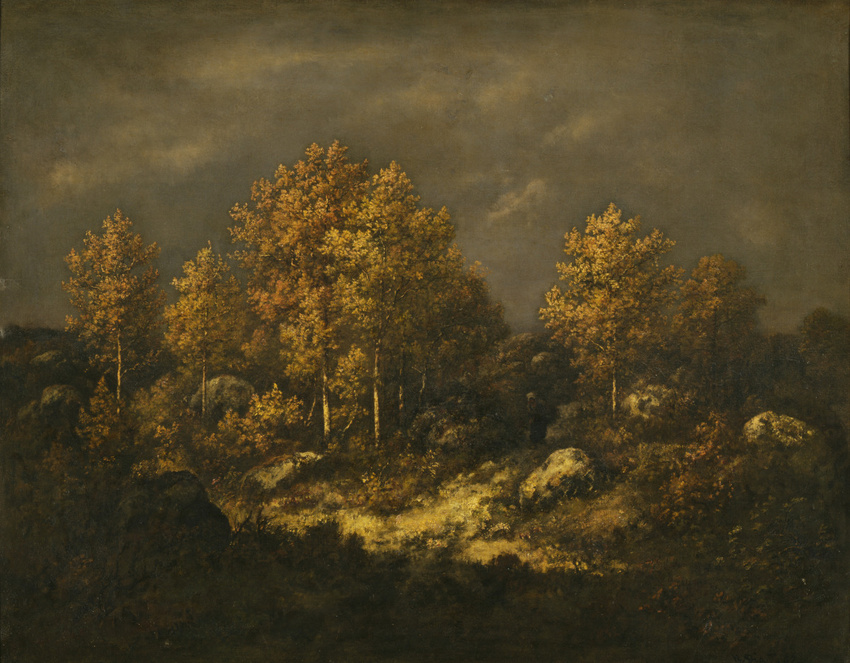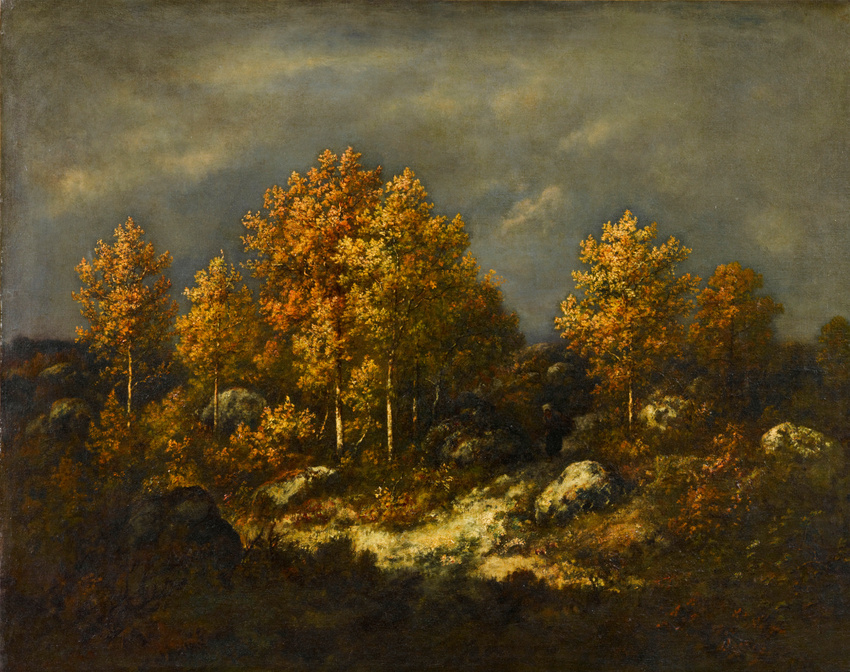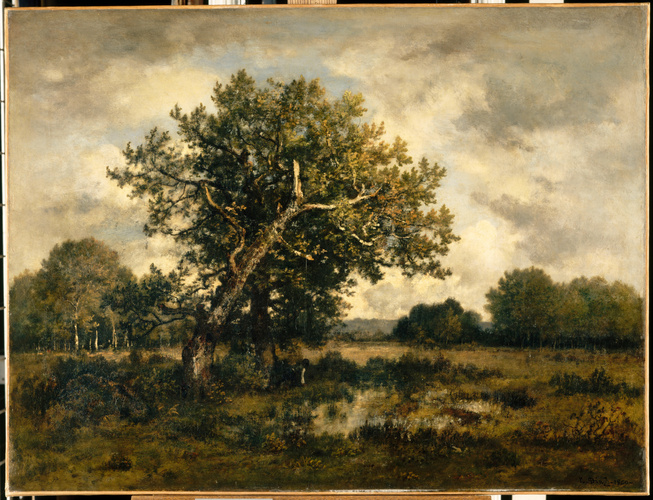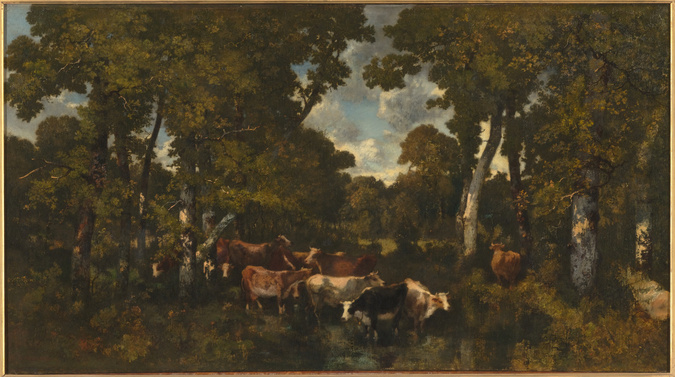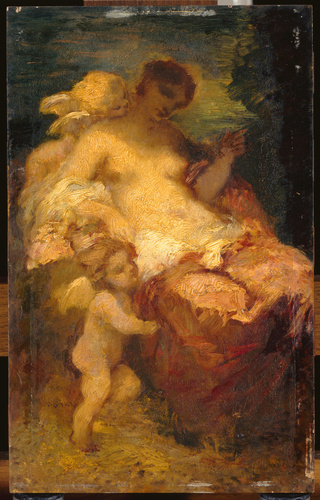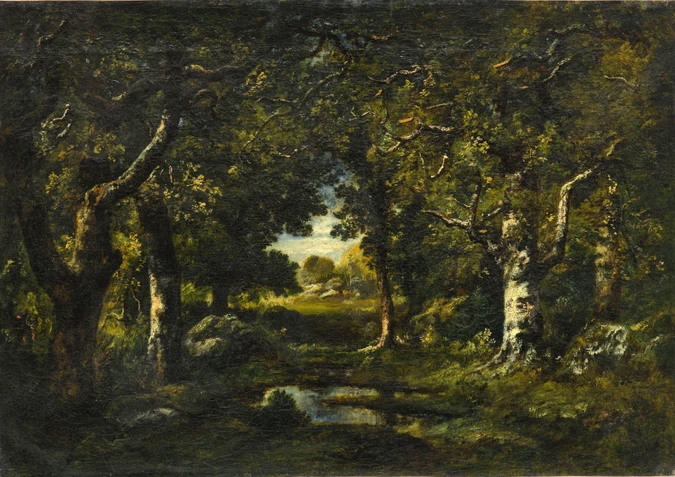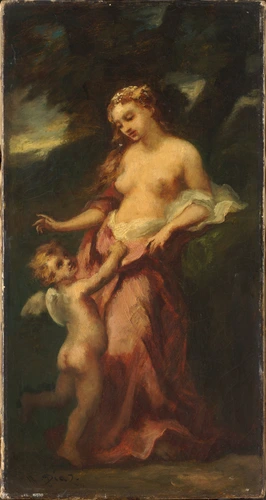Les Hauteurs du Jean-de-Paris
A French artist of Spanish descent, Narcisse Diaz de la Peña worked for a while in a porcelain factory before devoting his time wholly to painting. From his first appearance in the Salon, in 1831, he was greatly admired for his fanciful amorous scenes. Despite the popularity of his nymphs, he was soon attracted by landscapes and joined his friends Jules Dupré and Théodore Rousseau at Barbizon. He regularly worked in Fontainebleau forest where he excelled in creating the effects of light on the foliage and under the trees, with a fluttering stroke and pure colours.
The Heights of Le Jean de Paris (a place in the gorge of Apremont) are a good example of his skills as a colourist: brightly lit by the setting sun, they emerge from a classically dark foreground. By a strange lighting effect, the lively foliage of copse of trees which crowns the Heights stands out against a leaden, stormy sky. At the start of the path, the sun seems to be concentrated in a pale patch; beyond that almost total darkness closes in again, but the outline of a woman carrying a bundle of twigs can be made out among the mossy rocks. Although some criticised this artist for his facility and this canvas for its slightly theatrical aspect, his technique was most admired by his contemporaries and had a certain influence on artists he advised such as Monticelli and Renoir.
